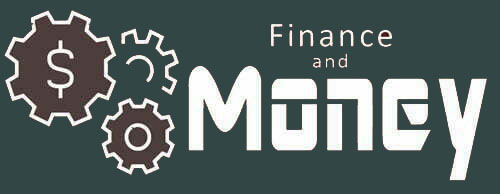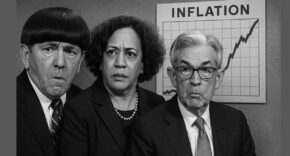What Trump Just Did — And Why It Matters
President Donald Trump recently canceled public-employee union contracts for thousands of federal workers in agencies tied to national security, citing a statutory national security exemption. This followed a March executive order expanding which agencies qualify for that exemption. An appeals court then lifted a block on the March order, finding that agencies with primary national security functions are not subject to the 1978 labor-relations statute. Union leaders called the move “disgraceful” and “retaliatory,” warning it threatens basic freedoms of speech and association for civil servants, many of whom are veterans.
A Long American Debate About Government Power
Concerns about public-sector union power are not new. In 1919, Massachusetts Gov. Calvin Coolidge fired striking Boston police and concluded, “There is no right to strike against the public safety, anywhere, anytime.” Franklin Roosevelt warned in 1937 that “the process of collective bargaining, as usually understood, cannot be transplanted into the public service,” because officials cannot “represent fully or bind the employer” in the same way as in the private sector. John F. Kennedy’s 1962 order allowed federal unions but excluded the FBI and CIA and withheld the phrase “collective bargaining,” reflecting limits in sensitive areas. Ronald Reagan’s response to the illegal PATCO strike underscored that government “has to provide without interruption the protective services which are government’s reason for being.”
How Public-Sector Unions Grew This Strong
The 1978 Civil Service Reform Act expanded union power by granting most federal workers the right to join unions and bargain over employment conditions, even as it preserved a national security carve-out. Political organizing then became the primary battlefield. Unions overwhelmingly support Democrats and use dues to fund campaigns. A report shows top teachers’ unions have given almost $50 million to left-wing groups since 2022.
Concrete Problems Cited By Critics
Opponents argue public-sector unions create conflicts of interest, compel political speech, and drive up costs.
- Compelled support for union politics. In states without right-to-work protections, workers were forced to pay “agency fees” that often equaled 80 to 100 percent of dues, even if they disagreed with the union’s agenda. As Marc Thiessen notes, when Indiana barred forced dues collection, only about 5 percent of state employees kept paying, and membership collapsed. After Wisconsin’s Act 10, AFSCME membership dropped by more than half in a year.
- Inflated costs and less accountability. In Wisconsin, teachers unions used bargaining to lock in health plans from union-affiliated insurers at higher prices. Once districts bid competitively, they saved $404.8 million over five years, money that could fund merit pay and classroom improvements.
- The “elect your own boss” problem. Victor Gotbaum of AFSCME boasted in 1975, “We have the power, in a sense, to elect our own boss.” Critics see this as a core distortion: unions help elect the officials who later sit across the table from them.
Backers point to a bipartisan lineage of concern about public-sector union power, from Theodore Roosevelt and Coolidge to FDR, JFK, Reagan, and both Presidents Bush. They argue Trump’s steps simply apply the long-recognized national security exemption, restore democratic accountability, and protect taxpayers and essential services from strikes or slowdowns. They also highlight court support for limiting bargaining in security-sensitive agencies and emphasize that negotiations over public wages and staffing are inherently political because they set budget priorities.
Detractors counter that Trump’s moves are part of a broader campaign to politicize the civil service. They cite a new “Schedule G” to convert more roles into political appointments and charge that canceling contracts “unlawfully” strips nearly a million workers of union rights. They warn this will erode merit-based administration, chill scientific integrity, and weaken whistleblower protections. Some critics portray the agenda as an assault on labor rights themselves, arguing that neutral enforcement bodies and safeguards are being undermined.
How Public-Sector Unions Are Likely To Retaliate
Expect a multi-front response.
- Legislative campaigns. Unions and allies are pushing the Protect America’s Workforce Act, bipartisan legislation sponsors say would restore collective bargaining rights to affected federal employees. Supporters argue that union input improves processes, reduces waste, boosts retention, and protects scientific integrity and lawful conduct at agencies like EPA, FEMA, VA, TSA, and SSA.
- Litigation and procedural resistance. Unions have already sued to block elements of Trump’s orders and will continue to challenge exemptions and contract terminations, especially where courts urged restraint while litigation proceeds.
- Escalated organizing and political spending. With striking restricted for federal workers, public-sector unions will intensify political mobilization, messaging, and turnout operations. Teachers’ unions and large federations are poised to increase funding for advocacy groups and campaigns.
- Calls for militancy in the broader movement. Some labor voices argue the moment requires more confrontational tactics, pointing to recent public-university strikes as examples of how coordinated action can reset bargaining power. They predict a push for larger coalitions linking federal, state, and local public workers with private-sector unions.
At its core, the clash is over who governs the government. Supporters of Trump’s actions say elected leaders must set policy without being bound by unions that can outspend and out-organize taxpayers. Detractors say civil servants need collective rights to protect professionalism, speak up against misuse of authority, and ensure agencies serve the public rather than politics. The historical record shows presidents from both parties have warned about the special risks of union power inside government, especially where national security and uninterrupted public safety are on the line.





